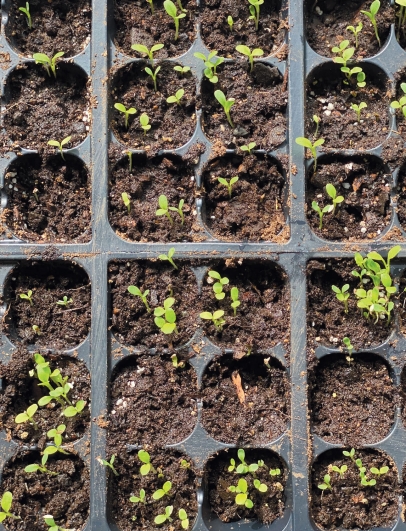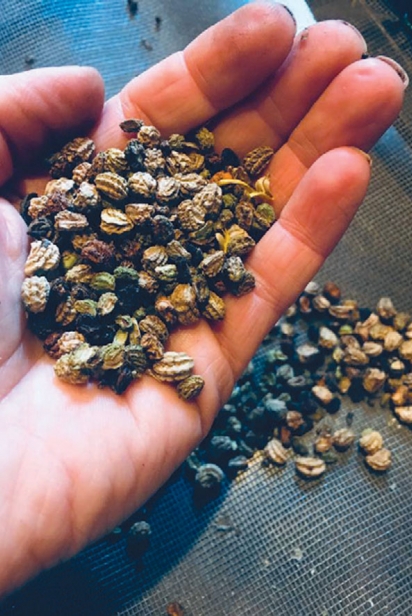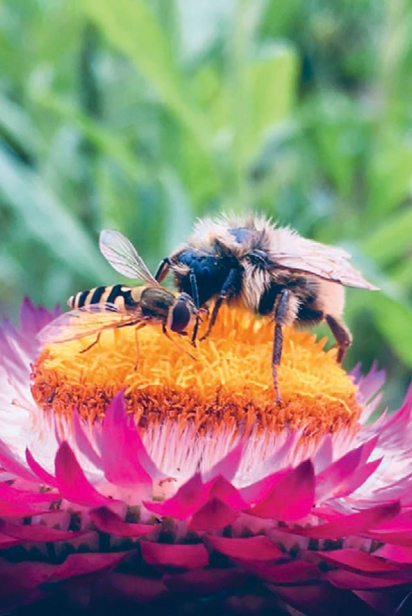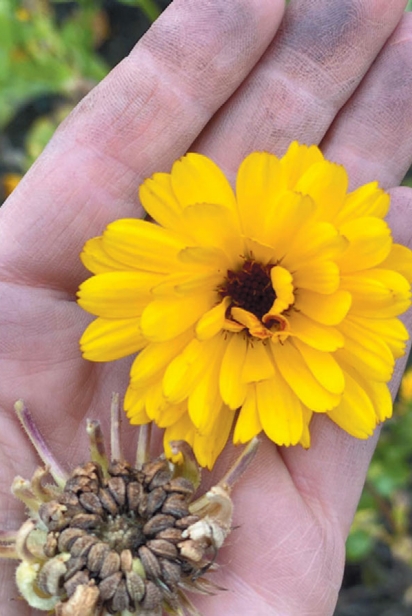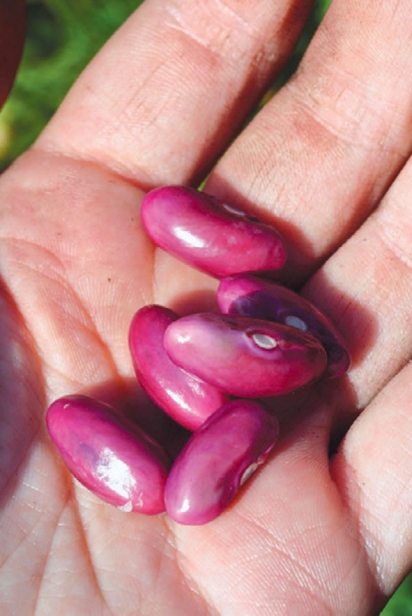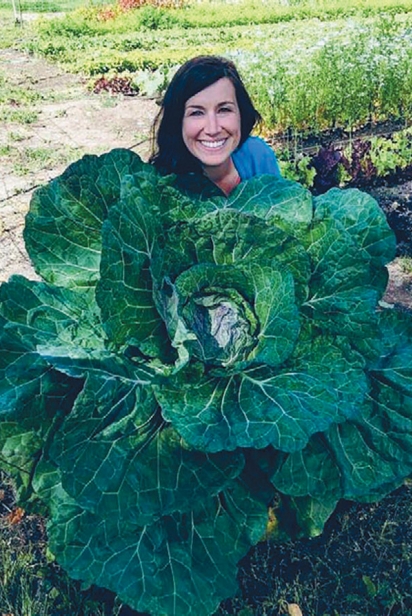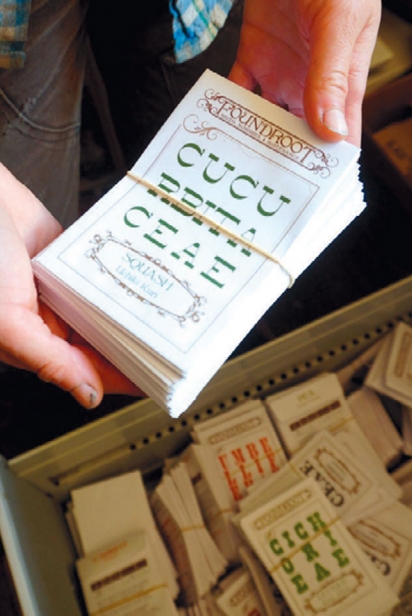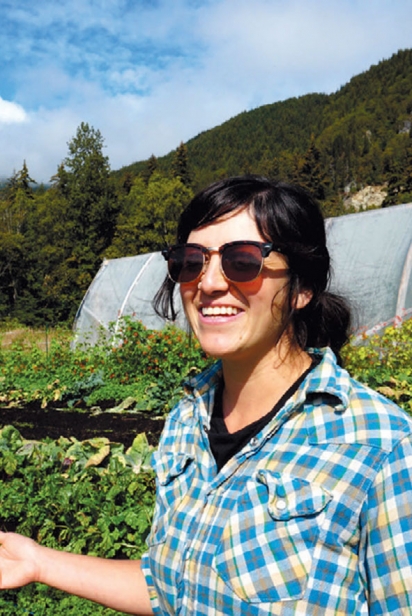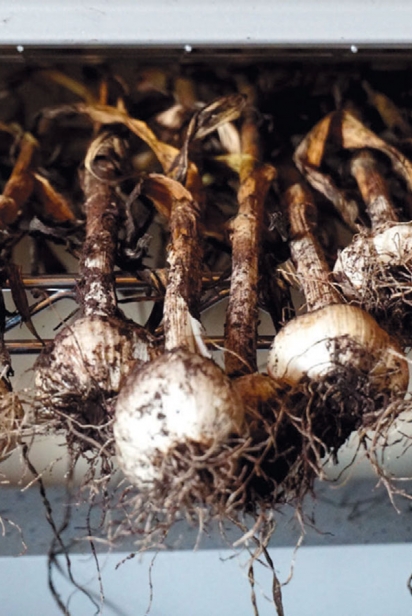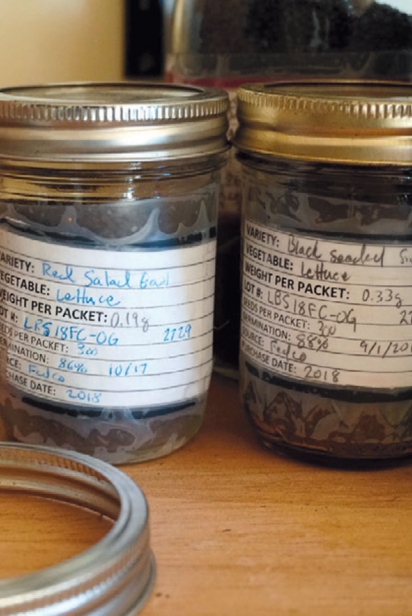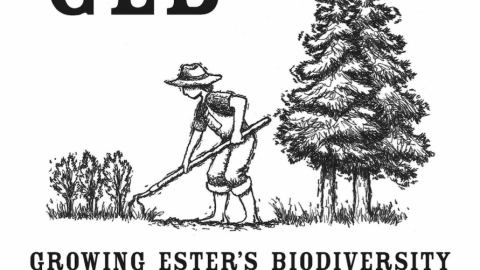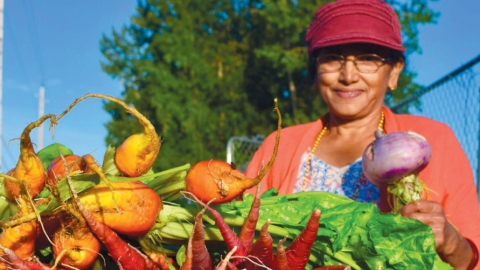Seeds of Food Security
In times of uncertainty, seeds offer stability
Jennifer Sharrock’s seed business was just getting off the ground when the pandemic hit. She and her husband, the only employees of the Palmer-based Seeds & Soil Farm, struggled to keep up with skyrocketing demand.
“I was like, ‘Holy smokes, is this normal?’” she said. “I literally got tennis elbow from just the repetitive motion of filling seed packets because everything we do is by hand.”
Foundroot, another Alaska-based seed business, tripled their sales, and had to restrict business to in-state customers. Even national seed companies like Burpee sold out in large quantities and delayed shipping of orders.
Stuck at home, many people had more time on their hands to plant a garden. Others worried about supply chain disruptions or wanted to save money by growing their own vegetables from seed. And then there are the nourishment and empowerment that come from growing good food.
“In a time of such uncertainty, a lot of people will go within and be like, ‘What do I need to be able to survive?’ And I mean, seed is basically survival, right?” Sharrock said. “It was energizing and I felt like in some way I could help the situation, even though I felt so helpless at the time.”
Sharrock started Seeds & Soil in 2016. At first, she sold vegetables from her half-acre farm on Lazy Mountain in the summer and taught permaculture classes in the winter. But in 2019, she decided to expand into growing seeds. Along with selling seeds, a big part of Sharrock’s business is teaching people how to save them, a practice that could have helped many gardeners avoid panic buying last spring. Seed saving is as old as agriculture itself and gardeners who practice it don’t have to rely on far-flung companies whose seeds have never experienced the short growing season, and bipolar weather patterns of the far north.
Seeds & Soil is one of a handful of entities working to change how Alaskans think about seeds. Sharrock even provides basic seed saving instructions on her packets.
“I think everybody should save their own seed just to understand what plants actually give to us,” Sharrock said. “It brings it back to a greater appreciation of nature, of ecology, of soil, of where your food comes from.”
The growing season is over when Sharrock and I speak over the phone on a chilly fall day, but the work is just beginning. Her house is scattered with drying seeds in different stages of production—she’s in the process of removing the hulls, pods, and excess plant material. Sharrock will soon send what’s left to the Alaska Plant Materials Center, a state-run facility outside of Palmer that provides all kinds of agricultural services to Alaska farmers, from supplying certified seed potatoes to conducting variety trials to cleaning and testing seeds.
“You bring them totes upon totes upon totes and they have these ridiculously expensive machines for every type of seed you can imagine. And they separate and clean [them],” Sharrock said. “So you send in like a four cubic foot tote of seed and you get back like a sandwich bagful.”
Sharrock then packs and ships each seed packet by hand, just in time to start the whole process again in the spring. It’s a lot of work, especially for biennial plants that have to withstand Alaska’s harsh climate for two years before they produce seeds, or for plants that can cross-pollinate with other varieties.
But not every seed saving endeavor has to grow into a commercial operation like Seeds & Soil. Instead, it can be as simple as harvesting mature bean pods, spreading the seeds out to dry, and storing them in a cool place until the spring. Sharrock said she started with annual, self-pollinating varieties that have a short growing season and her curiosity took hold from there.
“I just thought it was the coolest thing in the world. I was in awe of how a seed can hold so much of the future within it, and be so resilient. I mean, they can go through the acidity of an animal’s digestive tract and plant themselves and grow something,” she said. “How cool is that?”
Preserving Biodiversity
A century ago, it wasn’t uncommon for a farmer to save seeds from the healthiest crops and pass them down through generations, but as science advanced and agriculture grew larger and less diversified, the practice fell out of favor. Instead, today, most farmers purchase varieties that have been bred or genetically modified to produce maximum yield on large-scale, intensive farms.
That means that about three-fourths of the world’s food supply comes from just 12 plants, according to the International Development Research Centre. Seed saving advocates and some small-scale farmers argue that we’re facing a crisis of agricultural biodiversity.
Every year, more and more varieties of seeds just disappear because nobody is producing them or saving them anymore,” said Monique Musick, who helps run the Ester Seed Library. The library collects seeds from growers in the small community near Fairbanks and facilitates free exchange. “The more people that we can get involved, the more of a stable collection we’ll have that’s really designed for our area.”
The world lost 75 percent of crop diversity in the last century, according to the United Nations’ Food and Agriculture Organization. A loss of biodiversity also means a loss of genetic information that could help crops resist drought, pests, and diseases, said Kristin Haney, who also helps with the Ester Seed project.
“Monocultures cause more use of pesticides because if you have one variety of one thing that’s all closely related, any pests and diseases are eventually going to specialize in that thing and then you have to use more bug killers and weed killers, the kinds of things we’re trying to get away from,” Haney said.
That’s part of what the Ester Seed Library is trying to address. It’s one of a handful of seed saving projects bubbling up around Alaska, and they’re in the process of setting up a literal card catalog of seeds that Ester growers can “check out” for the season. The idea is that they plant them, collect seeds from the most vigorous plants, and return the offspring at the end of the season with notes on how they did. Musick said such small efforts aren’t going to solve big problems like food insecurity, or loss of crop diversity single-handedly, but it can make a small dent.
“Getting more and more people trying things and growing their own food, you know, that in itself is not going to solve the food security issue,” she said. “But we can help protect those things that do grow here and encourage that from other people.”
Breeding Resiliency
One hot, dry day in the summer of 2019, Leah Wagner shows me around her half-acre farm in Haines. We step inside a small greenhouse where a jungle of peppers and tomatoes sprawls.
“These are those whippersnappers I was telling you about,” she said as she pulled back the foliage of a tomato plant heavy with grape-sized fruit. The variety prospers in Alaska’s short growing season, but its seeds are hard to come by.
“That’s what happens with these seed varieties that peripheral cli- mates like Alaska are reliant upon, they’re not very popular,” Wagner said. So, she started growing and selling its seeds herself.
Wagner and her husband Nick Schlosstein started their seed business Foundroot in 2012 as a side project. She had just finished an intensive training in Arizona on sustainable seed production and distribution and she wanted to bring what she’d learned to Alaska.
“There was very little conversation happening around seed saving and food security in Alaska at the time,” Wagner said. “It kind of became the solution to a lot of the problems I had been mulling over in my head, not just feeding people, but helping people feed themselves.”
At first, Foundroot sourced all of their seeds from other companies. They focused on open-pollinated seeds well suited for northern climates. Then in 2016, they moved to Haines to start breeding and growing their own seeds, too. Since then, they’ve sent seeds to over 70 different communities around the state and sold over 30,000 seed packets.
“There are very few companies doing things at this latitude or above, and if they are, they usually have a more hospitable summer than we do,” Wagner said. “There are seed companies where they’re able to grow all of their own seeds, but for us it’s kind of this handpicked catalog of what we’ve tested and proven and it’s mostly limited by our ability to breed out those more obscure seeds that are hard to find in large quantities.”
The owners have lots of ambitions, like breeding eggplant and melon varieties well suited for Alaska. And they’re trying to breed seeds that can withstand the ups and downs of Alaska’s climate, which may only grow more extreme with climate change. The third wettest summer on record in Haines followed the record-breaking heat of 2019.
“It’s really interesting in the face of a changing climate that these seeds that are tolerating 57 degrees and pouring rain are also tolerating those 90 degree drought days,” she said. “And so in terms of breeding, we’re just getting these beefy varieties that can do a lot and we’re getting to trial them in different circumstances.”
Wagner sees Foundroot’s work, educating their customers about gardening and seed saving and promoting local food production, as a way to build resiliency in the face of that uncertainty.
“We’ve always been proponents of disseminating our food system locally and regionally and I think doing seeds, and doing small-scale growing, is always going to be more resilient in a changing climate,” she said.
And that came to a head for Foundroot during the early days of the pandemic, too. Like Seeds & Soil, they had a busy spring. That included talking customers all over the state through hours of garden planning.
“Besides just packing seed packets as fast as we possibly could, it was just having these conversations with people, some of which who really had never grown anything before and just understanding that feeling of urgency, that feeling of fear that arose in people,” Wagner said. “Like how can we provide more materials so they can at least have some sort of baseline of education to have a leg to stand on?”
One such person was Alicia Maryott, who planted a small garden in her parents’ backyard this spring with seeds she bought from Foundroot. She doesn’t normally garden but she had more time on her hands because of the pandemic.
“I wanted to support someone local and just learn a little bit more about caring for the seeds,” she said. “I love the thought of being able to pass seeds down to family… and just knowing where they came from and continuing their sustainable life.”
And that’s Foundroot’s goal: to inspire a network of small, subsistence food production tailored to the various microclimates throughout the state that can sustain itself, even in uncertain times, through low-impact growing and seed saving.
“Seeds are these small miracle treasures that are full of so much potential and so many different ideas. And the amount of seeds that can be produced from one plant is kind of mind boggling. And so to be able to redistribute that and see how much food that turns into, and feel like we’re kind of banking these treasures, that can really solve a lot of scary, very present problems,” Wagner said.
“It’s always a comforting feeling for me.”


